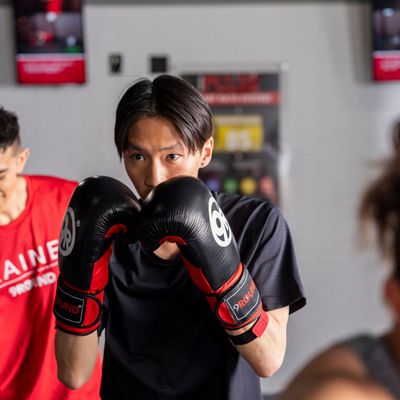Types of Muscles Fibers and How They Work

There are two main types of muscle fibers that help you perform daily activities. If you want to grow stronger, you have to engage both kinds of muscle fibers during your workouts, as this will train them to work more efficiently. Luckily, your 9Round workouts can help you do this, so let’s take a look at the two different types of muscle and how they’re challenged during your 30-minute workout.
Slow Twitch Muscle Fibers (Type I)
Your slow twitch muscle fibers are known for their endurance, as they can work for long periods of time before they become exhausted. Think about activities such as jogging or lifting lighter weights, which can be maintained longer than sprinting or lifting heavier weights. This because slow twitch muscle fibers are able to produce their own source of energy using mitochondria. These are small organelles that use oxygen to create adenosine triphosphate (ATP), the chemical that fuels muscle contractions.
Slow twitch muscle fibers are often the first muscle that’s used to create a new movement; however, they cannot generate large amounts of force and are smaller in size compared to fast twitch fibers. When slow twitch fibers are unable to produce enough force to complete a movement, the fast twitch muscle fibers are called on to finish the job.
Fast Twitch Muscle Fibers (Type II)
Fast twitch muscle fibers are renowned for their ability to create explosive strength and power, as they are larger in size and can generate more force compared to your slow twitch fibers – think activities such as sprinting and power lifting. Unfortunately, fast twitch muscles are easily fatigued, which means they can only be used for shorter periods of time.
You can break down fast twitch muscle fibers into further subgroups called, Type IIa and Type IIb.
- Type IIA muscle fibers are slightly more efficient than Type IIb fibers, as they use some oxygen to convert glycogen (sugar) to adenosine triphosphate (ATP); however, not nearly as much oxygen as Type I fibers are able to use.
- Type IIb muscle fibers have the fastest twitch time, which also means they fatigue the quickest. This is because they rely on ATP that’s stored in your muscles in order to generate force. So, they don’t have to wait around for fuel to be created, but once the fuel runs out, they have to wait for it to be replenished.
Different people have varying amounts of each kind of muscle fiber, which is why some people are more inclined to be better at certain activities. For example, those with more slow twitch fibers might be better at distance running while someone with more fast twitch fibers would prefer sprinting. Nevertheless, it’s important for you to work both kinds of muscle fibers with a well-balanced fitness routine. Luckily, your 9Round workouts do just that!
How 9Round Workouts Target Different Muscle Fibers
Our Fitness Programming team at 9Round ensures both types of muscle fibers are engaged during our Killer Workouts, so you’re able to improve both over time. The easiest way to see how we target each kind of muscle fiber is by following our bell system.
The Green Bell signals you to start the next three-minute round. We encourage you to maintain a moderate intensity for the entire round, which requires your body to use oxygen for creating energy. Exercising at this pace focuses on engaging your slow twitch muscle fibers, as they are able to maintain exercise for longer periods of time. The flow of oxygen during this portion of your workout helps your body convert more nutrients into energy, so you can burn more fat.
Once you hear the Yellow Bell, which signals 30 seconds left in the round, we will encourage you to pick up your pace for more vigorous exercise intensity. During this portion of the workout, we want you to burn it out and engage those fast twitch muscle fibers. When you are working out at this pace, your body won’t be able to rely on fat as an energy source anymore, so it switches over to converting glycogen (sugar) into energy instead. Glycogen can be converted into energy much quicker than other nutrients; however, this process cannot be maintained for long periods of time, which is why we only encourage you to workout at this intensity for 30 seconds at the end of every round.
After you burn up your fast twitch muscle fibers during the last 30 seconds of the round, you’ll hear the Red Bell signal an active break period. This time is great for allowing your muscles to recover, so you can prepare for another round of moderate intensity exercise and repeat the process all over again. Doing this same process for all nine rounds is what helps you get a full-body workout that conditions both types of muscle fibers to help you grow stronger.
Our KILLER 9Round workouts are the perfect full-body solution for anyone looking to get in shape! Try our revolutionary kickboxing fitness program for FREE using the link below, and then get ready to kick your fitness goals into action!
This is not medical advice. Please speak with your doctor regarding any health concerns and before starting a new workout routine. This article was written in conjunction with our certified 9Round Exercise and Nutrition Specialist, MacKenzie Rowand, CSCS, NASM-CNC.


